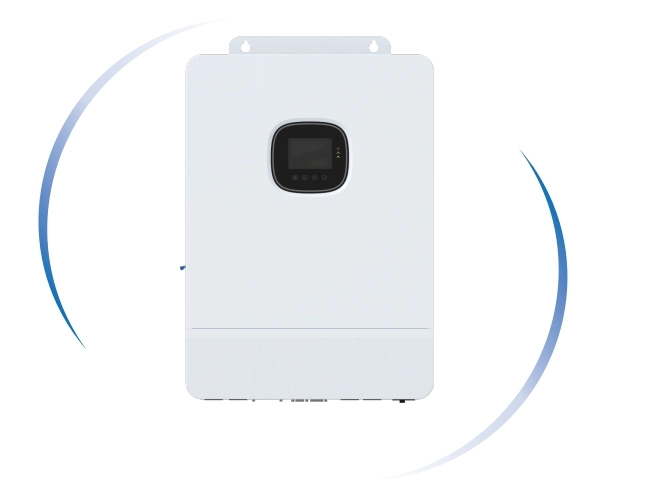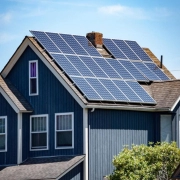How to eliminate voltage fluctuations in On Grid Solar System?
Voltage stability is a critical performance parameter for any on grid solar system, as it directly affects power quality, equipment lifespan, and grid reliability. Rapid changes in solar irradiance, grid disturbances, or changes in load demand can cause voltage fluctuations. For residential and commercial users who rely on solar power, these fluctuations can cause flickering lights, electronic equipment failures, and reduced efficiency in inverters and other power electronics. Maintaining stable voltage within specified tolerances in North America, Southeast Asia, and beyond is critical to ensure compliance with utility interconnection standards and protect sensitive equipment. In this guide, we explore the root causes of voltage fluctuations, analyze the roles of inverters and grid codes, and provide solutions such as voltage regulators, dynamic reactive power compensation, and integrating battery energy storage to minimize disturbances.
Identifying the root causes of voltage fluctuations in on grid solar systems
The primary destabilizing factors must first be identified to mitigate voltage fluctuations in on grid solar systems. Rapid changes in solar irradiance can cause sudden changes in the output of the PV array. Such changes force the inverter to continuously adjust its modulation strategy to maintain a stable AC output, which can cause voltage spikes or voltage sags at the point of common coupling. Grid disturbances, such as short circuits, load switching, or utility-side voltage regulation operations, can also feed into the solar installation. Local load changes can also cause sudden demand peaks, temporarily pulling down the voltage. Together, these factors affect the inverter’s MPP and ability to maintain stable voltage, highlighting the need for robust system design and auxiliary control mechanisms.

Voltage Regulation with Advanced Inverter Control
Inverters are central to managing voltage stability in on grid solar systems. The control algorithms the inverter provides enable the PV system to actively regulate the voltage at the PCC. By adjusting reactive power output based on voltage deviations, intelligent inverters can absorb or inject VARs, smoothing fluctuations and supporting grid stability. In addition, MPPT algorithms can be adjusted to respond quickly and smoothly to irradiance changes, reducing the magnitude of power fluctuations. Some smart inverters also feature programmable voltage ride-throughs, enabling them to remain connected and support grid voltage during brief disturbances. Using inverters certified to IEEE 1547-2018 and UL 1741SA ensures solar arrays can provide necessary grid services, maintain voltage stability, and meet changing utility requirements.

Leveraging Voltage Regulators and Static Var Compensators
For large residential or small commercial on grid solar systems, external voltage regulation devices can provide additional stabilization capabilities beyond the inverter. On-load tap changers on transformers adjust transformer turn ratios to keep downstream voltage levels within set limits and compensate for up and down deviations. Similarly, static VAR and synchronous compensators dynamically inject or absorb reactive power in sub-second periods to provide rapid voltage support. Installing these devices near the point of common coupling or at critical distribution nodes can significantly dampen voltage fluctuations caused by changes in solar radiation and load disturbances. While the upfront cost of installing an SVC or OLTC transformer can be high, the long-term benefits are often enough to justify the investment in large-scale residential solar installations or community solar projects.
Integrating Battery Energy Storage Systems in Grid-Connected Solar Systems
Battery energy storage systems are becoming an increasingly popular solution for mitigating voltage fluctuations in on grid solar system. Batteries can act as a buffer by storing excess PV power during peak sunshine hours and discharging it during periods of reduced irradiance or high load, smoothing the net power fed into the grid. This active power smoothing function can significantly reduce voltage fluctuations in PV grid-connected control systems.
Deploying hybrid inverters that can seamlessly manage PV input and battery energy storage system output enables programmable voltage rate of change control. Users can set the maximum allowable rate of change to prevent sudden power fluctuations. In addition, advanced energy management systems can optimize battery charge and discharge schedules to minimize grid disturbances that cause voltage fluctuations. For residential grid-connected solar systems, a battery energy storage system that can handle short-term fluctuations can provide effective voltage stabilization without excessive battery investment.

Make Your System Voltage More Stable
Eliminating voltage fluctuations in on grid solar system requires a multi-pronged approach: identifying the root cause, leveraging inverter control, deploying auxiliary regulation devices, integrating energy storage systems, and maintaining a robust monitoring system. By combining these strategies, supplemented with industry-standard hardware and proactive maintenance practices, solar system owners can ensure steady, high-quality power delivery, which improves grid reliability and extends equipment life.








